
Después de una noche de tragos en un bar, Olga sale con un extraño y lo lleva a su hogar. Mientras tienen relaciones sexuales, ella ve la foto de un niño pequeño en la pared, y recuerda tocar el piano y divertirse con el. Después el filme muestra a Olga en el baño inyectándose drogas para después vagar por las calles bajo la influencia de narcóticos y alimentar a un perro con pan mientras continúa recordando estar con el pequeño niño. Olga regresa al mismo bar acompañada de una mujer y se emborracha; después de salir juntas hacia el hogar de Olga, empiezan a desvestirse y besarse. Olga ve la foto otra vez y empieza a llorar, esta escena es seguida por imágenes de ella recibiendo oxígeno en una ambulancia y después llorando a lado de la otra mujer, mirando la fotografía.
After a night of drinks in a bar, Olga leaves with a stranger and takes him home. While having sex with him, she sees the picture of a little boy on the wall, and remembers playing piano and having fun with him. Afterwards the film shows Olga in the bathroom injecting herself with drugs, wandering the streets while in the influence of the drugs and feeding a dog with bread while she keeps on remembering being with the kid. Olga then goes to the same bar with a woman and gets drunk, they leave together to Olga’s home and while they begin to undress and kiss, she sees the picture again and starts crying, this scene is followed by images of her receiving oxygen in an ambulance, and then crying again next to the other woman, looking at the picture.
"documentario"/documentary
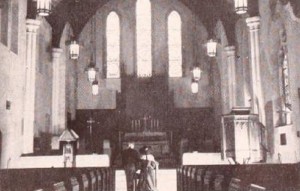
David Bradley's amateur feature film adaptation of Charles Dickens's Oliver Twist.
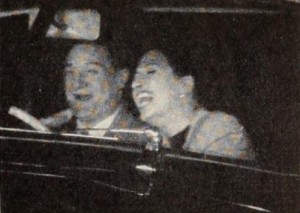
"Featuring a philandering wife, an illicit lover and a trusting husband, Olvido (Oblivion) proves once again, in the course of its sharply paced sequences, that the wages of sin is death. In it, the taut situations (which will lead at the last to murder and suicide) are so expertly directed and suavely acted that they develop always within the bounds of credibility. This achievement is especially noteworthy in an amateur photoplay of this melodramatic type. For others, attempting work in the same medium, have lapsed all too often into either the ridiculous or the farcical. Producers Oscar J. Bonello and Roberto Robertie, both officers of the Cine Club Argentino, in Buenos Aires, have used black and white film wisely, since its stark contrasts under low-key lighting are more effective than would be those of color. The Spanish sound track, employed sparingly and with dramatic force, is in keeping with the high standards of the rest of the picture." Movie Makers, Dec. 1952, 339.
Olympionic is another successful film by Rose and Stuart Dabbs of the Bronx. Naturally it's in color, and it is only 4 minutes long. The film is an excellent example of creativity, experimentation and what have you. It's all put together neatly. Here's your chance to see a film twice, three times and even as many as twenty times all in one screening. The gracefulness of the film is really a work of art. Oh yes, it's about Olympic diving" PSA Journal, Nov. 1969, 57.
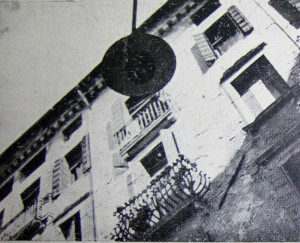
"doc. a fantasia"/avant-garde documentary
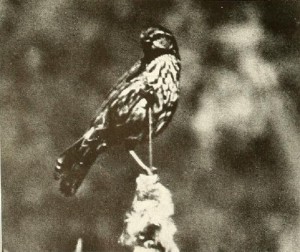
"On Every Hand, filmed by William L. Zeller, is one of those pictures, not infrequently found in the Ten Best selections, that make one marvel at the producer's infinite patience and deep knowledge of a special field. This is a study of those birds that can be found on every hand in the countryside and in the fields of America but which the average man fails to recognize, or even see, much less lovingly study as does Mr. Zeller. In this finished picture, there are many closeups made in the open of birds and their nests, which represent such a colorful variety of bird life as to give one something of a feeling of awe for the patience that Mr. Zeller must have exercised to catch the scenes. The picture is all in color, which brings a revelation of its own, and the continuity and titles are contrived to make an essentially record picture into good entertainment. For this quality, credit goes chiefly to the extremely well written titles and the editing." Movie Makers, Dec. 1936, 542.
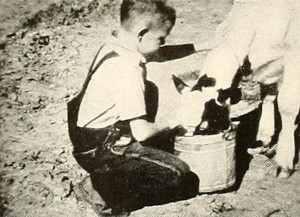
"On the Farm, made by Mr. and Mrs. Ray Garner for the Harmon Foundation, is an example of visual education at its best. By the use of two charming, healthy little American children as the chief characters, it enlists sympathy before it attempts to instruct. And it never strays from the fundamental concept which, to all evidence, was in the minds of its makers: namely that, to teach children by visual aids, one must appeal to their sense of fun. Charm, here, is not outlawed simply because it is not informative. Divided into two parts, Morning and Afternoon, and illustrated with unpretentious titles, such as This is how the animals help, which are chalked in white letters on a blackboard, On the Farm tells of a common workday, in terms of what two farm children can do to assist their parents. From the sequence in which the tousled farm lad puts his head out of the window to see what kind of a daybreak it is. to the time when the sun goes down behind the silo, almost every kind of farm activity is shown. Other children in city classrooms are going to see themselves in the scenes and will want to learn more about a way of life in which they can feel so much at home." Movie Makers, Dec. 1940, 600-601.
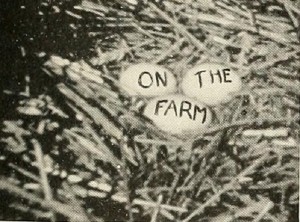
"Sunlight and morning noises, the rich, sweet smell of clover, the hot grain fields at midday and windmills drawing water from the deep earth — these are part of the common life of an Ohio farm that two young girls, Marjean and Mary Elizabeth Headapohl, have put into their film, On the Farm. It is a record as American in feeling as Walderts Pond, even though unconsciously so. Innumerable closeups show the generousness of the earth in Ohio, whether in flowers around the house or in the grain and vegetables of the fields. Day after day, the imponderable clouds drift by. Peas are shelled for dinner; the cows are brought in from the pasture by the collie dog; the farm hands return to the barn after a day of harvesting wheat. There is little more shown, in substance, and presently the film ends. But it leaves one with a conviction that this simple way of life in America cannot easily be changed, and that, as long as people of good hearts make records such as this, we cannot wholly forget that the Republic was founded on the plough." Movie Maker, Dec. 1940, 603-604.
Total Pages: 299